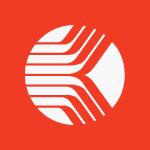Kronos Q3 2021 Earnings Report
Key Takeaways
Kronos Worldwide, Inc. reported a significant increase in net income for Q3 2021, reaching $36.0 million, or $.31 per share, compared to $8.1 million, or $.07 per share, in Q3 2020. The increase was primarily driven by higher sales volumes and average TiO2 selling prices, although partially offset by increased production costs.
Net income increased to $36.0 million, or $.31 per share, compared to $8.1 million, or $.07 per share in Q3 2020.
Net sales rose to $499.8 million, a $82.9 million (20%) increase from Q3 2020.
TiO2 sales volumes increased by 6% compared to Q3 2020, driven by higher demand in European and North American markets.
Average TiO2 selling prices were 11% higher than in Q3 2020.
Kronos
Kronos
Forward Guidance
The statements in this release relating to matters that are not historical facts are forward-looking statements that represent management's beliefs and assumptions based on currently available information.
Positive Outlook
- Future supply and demand for our products
- The extent of the dependence of certain of our businesses on certain market sectors
- The cyclicality of our business
- Customer and producer inventory levels
- Unexpected or earlier-than-expected industry capacity expansion
Challenges Ahead
- Changes in raw material and other operating costs (such as energy and ore costs)
- Changes in the availability of raw materials (such as ore)
- General global economic and political conditions that harm the worldwide economy, disrupt our supply chain, increase material costs or reduce demand or perceived demand for our TiO2 products or impair our ability to operate our facilities (including changes in the level of gross domestic product in various regions of the world, natural disasters, terrorist acts, global conflicts and public health crises such as COVID-19)
- Competitive products and substitute products
- Customer and competitor strategies
